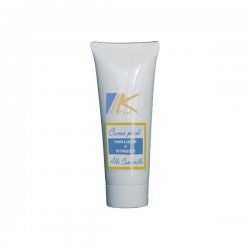- Salute e benessere
- 0 likes
- 2411 views

Today we talk about the health of the skin as much as it plays a vital role in maintaining the health and beauty of the whole body. The care that we pay to it today have been a priority for mankind in every bygone era. The skin is not a simple "covering" of our body but it is a real body whose main functions are to protect the body from foreign substances often harmful and avoid excessive loss of water. But how can we? How do we keep it hydrated and efficient?
The skin for its good preservation needs hydration.
Water is an essential element for the health of our skin, whose cleansing and hydration are basic actions to keep it in good condition. This is "mobilized", depending on the needs of the moment, through our dermal layer by various chemical / physical processes such as the system called TEWL (transepidermal water loss from English), physiological phenomenon which consists in the continuous diffusion and evaporation of water through the outer layers of the skin. .png) The water follows a well-defined path within the various skin layers: from the bloodstream reaches the skin to stratiderma, and then spread regularly and consistently up to the upper layers of the epidermis, where it has the task of preserving the skin surface hydration . The natural skin hydration is the result of several biological mechanisms with specific functions, which take place at the level of the dermis, epidermis and stratum corneum.
The water follows a well-defined path within the various skin layers: from the bloodstream reaches the skin to stratiderma, and then spread regularly and consistently up to the upper layers of the epidermis, where it has the task of preserving the skin surface hydration . The natural skin hydration is the result of several biological mechanisms with specific functions, which take place at the level of the dermis, epidermis and stratum corneum.
The epidermis and aquaporins
The water comes from the dermis below the epidermis; It has not yet been well clarified the water flow adjustment mechanism which crosses the basal membrane, but recent data show that the movement of water between cells in different layers of the epidermis depends on specific proteins called aquaporins. The aquaporins are proteins present in the epidermis that form the channels acting to convey water and water-soluble ingredients, transporting them to the surface. The aquaporins are critical in regulating the skin's water content. In 2003, for this shocking discovery, Peter Agre, American biochemist, was awarded the prestigious Nobel Prize in Chemistry. Before this revelation is believed that the water just crossed the membrane by simple diffusion. The aquaporins are a family of integral membrane proteins with water carrier function, and their physiological implications go far beyond the dermal compartment, as are present in many tissues of the body. In recent years, aquaporins have been studied to understand how they work, what their role within the skin and, above all, how to stimulate their synthesis. Only recently, however, it has started to plan the development of specific peptides capable of stimulating the synthesis of aquaporins and useful to improve the hydration of the skin.
What other skin function ensures the hydration on the surface?
As we have already analyzed above, the aquaporins are responsible for regulating skin hydration, however, proper hydration of the epidermis and stratum corneum, is only possible if the dermis there is a constant and regular supply of water, and it is sufficient to compensate for losses that take place through the perspiratio insensibilis. A balance against this dispersion provides the capability of the upper compartments of the skin to make efficient and constant hydration. The aqueous film which covers the epidermis is NMF (natural moisturizing factor) and is composed of all the lipidic substances not present on the epidermal surface. Even today are studying in depth the mechanisms by which the stratum corneum and its components regulate the skin moisture content. Cosmetic research, in fact, it revealed new mechanisms and trying to figure out what new molecules can be developed to ensure through cosmetic hydration. Besides all'NMF, participates in maintaining hydration also the "acid mantle" (reference to its slightly acidic pH, around 5.5). It is placed on the stratum corneum surface and is constituted by a set of different origin substances. Its composition is mainly characterized by the secretion products of the eccrine sweat glands and sebaceous glands, as polypeptide aggregates from the breakup of the corneocytes and lipids of epidermal origin. In summary, it is a mixture of lipophilic and hydrophilic substances, whose task is to protect the skin and, in particular, in maintaining the status hydrated stratum.
Healthy skin in our actions
In order to do always our skin radiant, young and beautiful, we have to keep it clean but especially hydrated with small daily gestures but constant over time. In addition to drink a sufficient quantity of water and eat fruits and vegetables, proper cleansing with a cleansing milk and a tonic that respects the pH and applying a moisturizer to the face and body is a minimal gesture but essential that we have to do in everyday life to ensure hydration of our skin.
It may also like:





